
The most popular show-breed dogs are often enjoyed as pets, best friends, and loyal companions. However, there’s plenty of fun and satisfaction to be had in participating in dog shows. At a local level, at country fairs and village fetes, you can have a great time with any breed or cross-breed. There will be classes for “dog looking most like their owner”, or “waggiest tail” – and who needs an aristocratic pedigree for that?
But if you’re a more competitive type, there are the larger, more serious dog shows that are only open to pedigree dogs. There are typical classes to suit all breeds and canine groups, for example, hound, terrier and so on. For this, your dog will have to exemplify its own breed standard. Some breeds, particularly the gundog types, have working and show strains. Furthermore, because in pure-bred shows the goal is to ensure the lineage of quality dogs, it is expected that your animal will not be spayed or neutered. Some shows permit it so long as you have informed the relevant kennel club, and some require a veterinary certificate.
Happily, while there are many rules and reams of information on breed standards, dogs of all shapes and sizes can show. You only have to look at the best-in-show roll of honor at two of the most prestigious dog shows in the world – Westminster and Crufts – to feel reassured the variety is welcomed. There are dogs from all groups represented, ranging from whippets to bulldogs and everything in between.
Let’s take a look at some of the most popular breeds of show dogs.
32 popular show breed dogs
1. English Cocker Spaniel

The English Cocker Spaniel has won best-in-show seven times in more than a century of Crufts, making it the most successful breed of all time. The first victorious cocker was named Luckystar of Ware, who won consecutive titles in 1920/21.
Show cockers are shorter and rounder, and with much longer ears, than the working variety, but are still classed as a working breed. They also tend to be calmer and more naturally affectionate than their working cousins.
The gundog group, to which the English cocker belongs, is also the most successful group at Crufts. Which is another reason gundogs are so popular.
2. Irish Setter

The Irish Setter, with its long, silky coat, is a natural in the show ring. Irish setters have won four best-in-show titles at Crufts. The show version of the Irish setter tends to be larger than the working dogs, with a silkier coat and more feathering.
3. Poodle (standard)

Although the poodle was bred to hunt ducks, they are naturals in the show ring, being wonderfully trainable and super posers. Poodles are normally shown with the elaborate continental clip, with a large pompon on the tail and a top knot pulled into a ponytail.
Nowadays this is done for appearance, but it harks back to tradition in that shaving them helped their speed in the water (leaving some hair on for warmth).
Standard poodles have won five best-in-shows at the Westminster Dog Show, which has been running since 1907, and four in the history of Crufts.
4. Welsh Terrier

Welsh Terriers feature four times as best-in-show at Crufts. These sporting dogs were a mainstay of dog shows as early as the 1800s. Though alert and spirited, they tend to be a touch calmer than other terriers, which is a handy attribute in the show ring.
Terriers are the most successful breed group at Westminster, accounting for 47 best-in-shows since 1907.
5. English Setter

With its elegant good looks and distinctive, flowing coat, the charming English Setter is a sporting dog with a sweet temper – typically the calmest of the four setter breeds.
The first show for English Setters was held in 1859, and this three-time Crufts champion has since become a popular dog in the US, where it was crowned Westminster’s best-in-show in 1938.
6. Flat coated retriever

A flat-coat is as adept at retrieving game as picking up a rosette – the working and show strains are one and the same. They are naturally eye-catching dogs, with their glossy black or liver coats, and fabulously feathered tail and legs. The breed is a three-time Crufts champ.
7. German Shepherd dog

There are two lines of German Shepherd dog: the working and show lines. Although they share the same ancestry and overall appearance, they do differ both in looks and temperament.
The show line – a triple best-in-show at Crufts – tends to have a more sloping back, broader body, and angled hindquarters. They tend to have lower energy levels, are less intense, and generally friendlier than those bred to work in law enforcement and the military.
8. Greyhound

While greyhounds were primarily bred to race at high speed rather than stand and pose, these sweet-tempered hounds make lovely show dogs. The show and racing greyhounds are bred along slightly different lines, where looks and beauty are prioritized over speed in the show strain.
In fact, greyhounds were among the first breeds at dog shows in the US and the UK. They were the very first breed to win best-in-show at Crufts, thanks to a fawn greyhound named Primley Sceptre in 1928.
9. Labrador Retriever

This hugely popular breed is a winner in the field, in the home and the show ring. There are slight difference between the show dog and gundog type, but many individual animals could do either job with aplomb.
The show dog Labrador Retriever tends to be slightly stockier and heavier whereas the field dogs are bred only with trainability for the task in mind, but a great show dog should exemplify the physique of a working dog.
10. West Highland White Terrier

Showing makes a great hobby for owners of Westies, but it will need some preparation in terms of both training and grooming. Their double coat must be hand-stripped, and it takes some time to master this art. But once you’ve nailed it, your Westie will look a picture!
Three Westies have won best-in-show at Crufts, the most recent in 2016, and twice at the Westminster.
11. Whippet

Whippets that are destined for the show ring aren’t typically the fastest of their breed. Instead, they major in looking great, standing and posing, plus they’ll have a pretty trot.
Whippets have won best-in-show crowns at both Westminster and Crufts.
12. Wire fox terrier
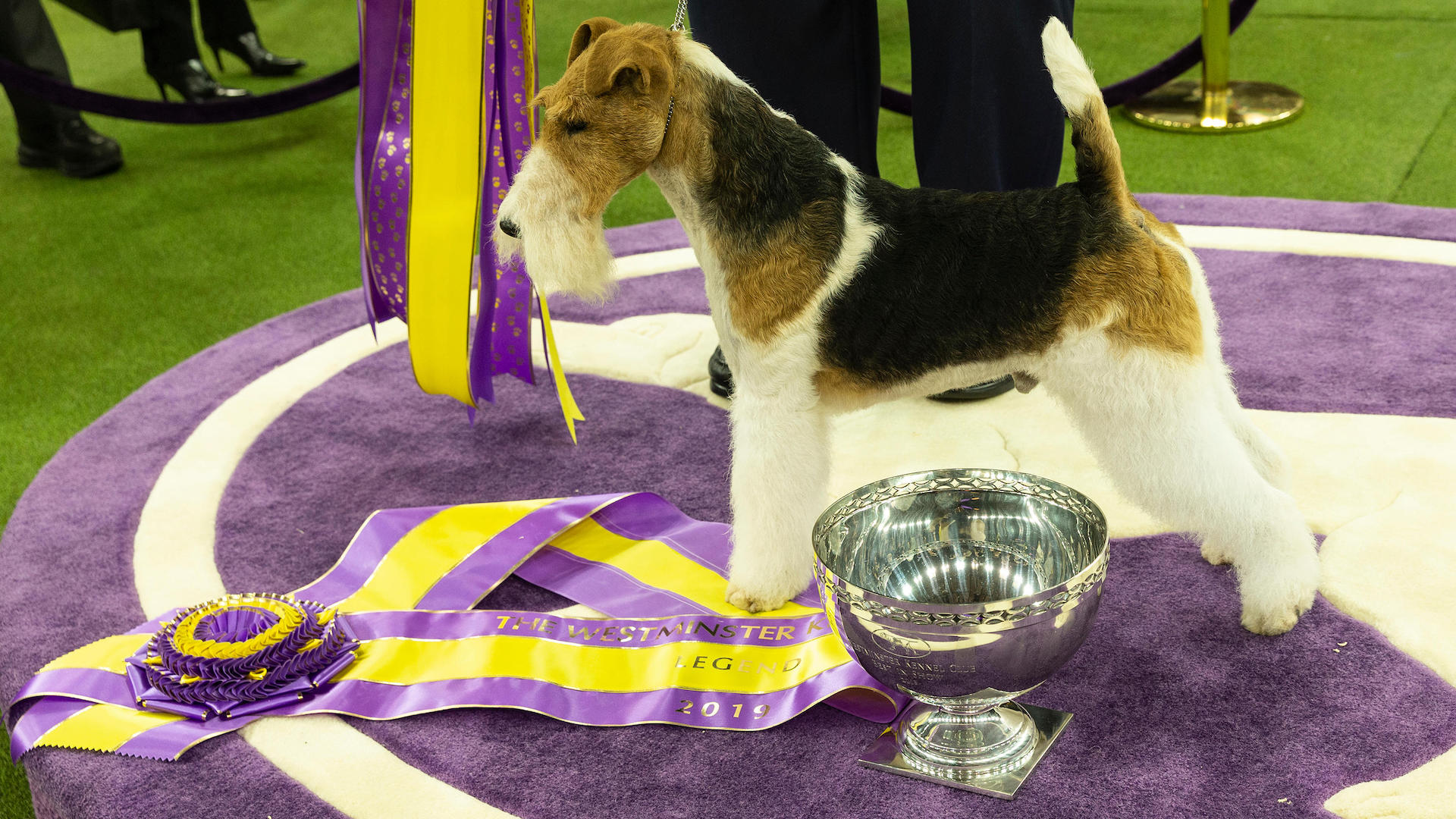
The wire fox terrier has no rival when it comes to the show ring in the US. This cocksure breed has won a record 15 of the best-in-show titles, almost double its nearest rival.
They are smart, companionable, athletic and master show dogs.
13. Afghan Hound
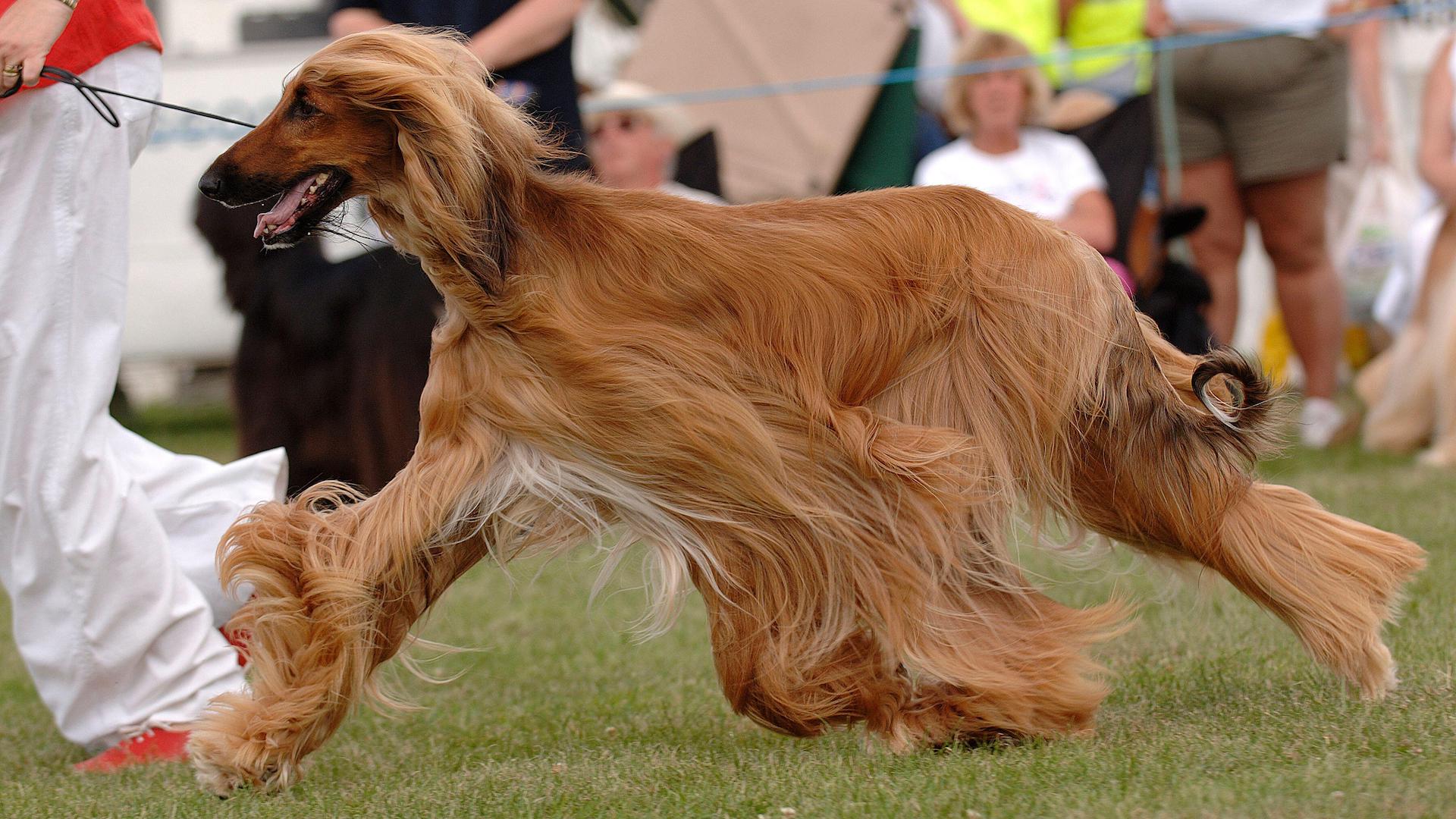
This ultra-glamorous hound with long flowing locks and an elegant, graceful stature not only has the looks of a supermodel, but the physique of an athlete.
Built to hunt in the harsh, mountainous terrain of Afghanistan, their sublime, silky coat is not only their crowning glory but a necessity for warmth and protection.
14. Airedale terrier

Particularly popular in the US, where the Airedale has won four best-in-show titles at Westminster, the largest of the terriers is a versatile breed. They can turn their paw to all sorts of sports and family activities, guard the home, and excel in the show ring.
15. Australian Shepherd dog
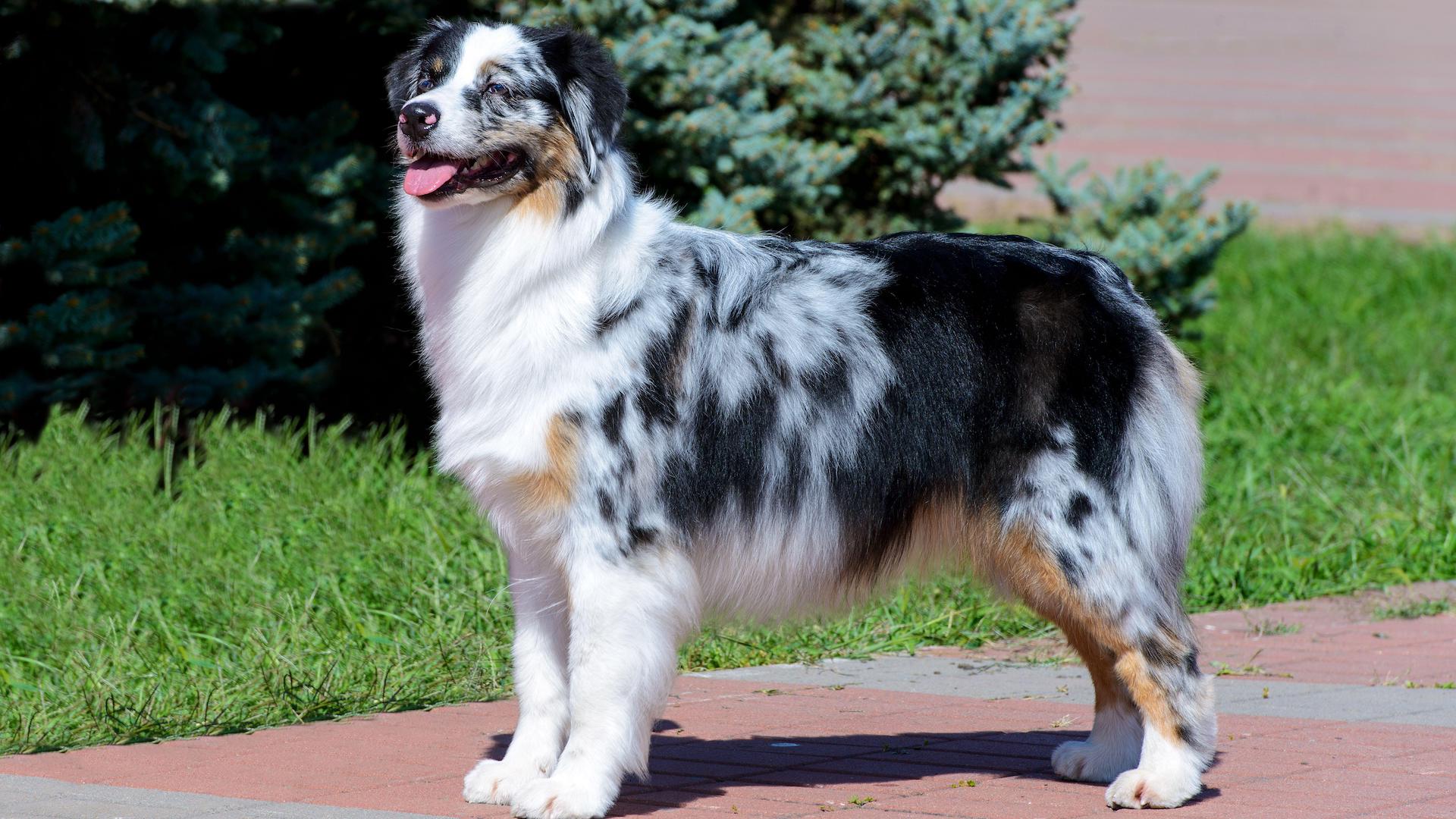
The appealing and distinctive markings of the Australian Shepherd dog set it apart in the show ring. While they are probably better known for their roles as service dogs, to help those with disabilities as well as drug-sniffing and search-and-rescue, they excel in showing thanks to their colorful coats and athleticism. An Australian S6huihepherd named Viking won Crufts in 2024, a sign of their increasing popularity in this sphere.
16. Kerry blue terrier

The Kerry blue is a fairly uncommon, unfashionable breed, compared to many other terriers, yet it has won best-in-show at both Crufts and Westminster. Their blue coat is a show-stopper – ranging in color from light blue-gray to a dark slate – and appealing both in feel and looks.
The breed has been shown in the US since the early 1920s, having only been imported in 1918-19.
17. Lakeland terrier

In common with many of the terrier breeds, the Lakeland requires quite a bit of work and patience to make their coat ring-ready. Their hard, wiry fur should be stripped and trimmed and this requires some practice and skill. However, the end result will be well worth the effort, as this is a dog that the judges love – both in the US and UK.
18. Lhasa Apso

The Lhasa Apso has prospered in the show ring for the best part of a century – it was originally classified with the Tibetan Terrier but since 1934 has been considered a separate breed.
Famous for their floor-length, flat coat that drapes down each side of its body, and a feathery tail that curls over its back. This is an exotic, elegant dog that is simply asking to sashay down the catwalk.
19. Pointer
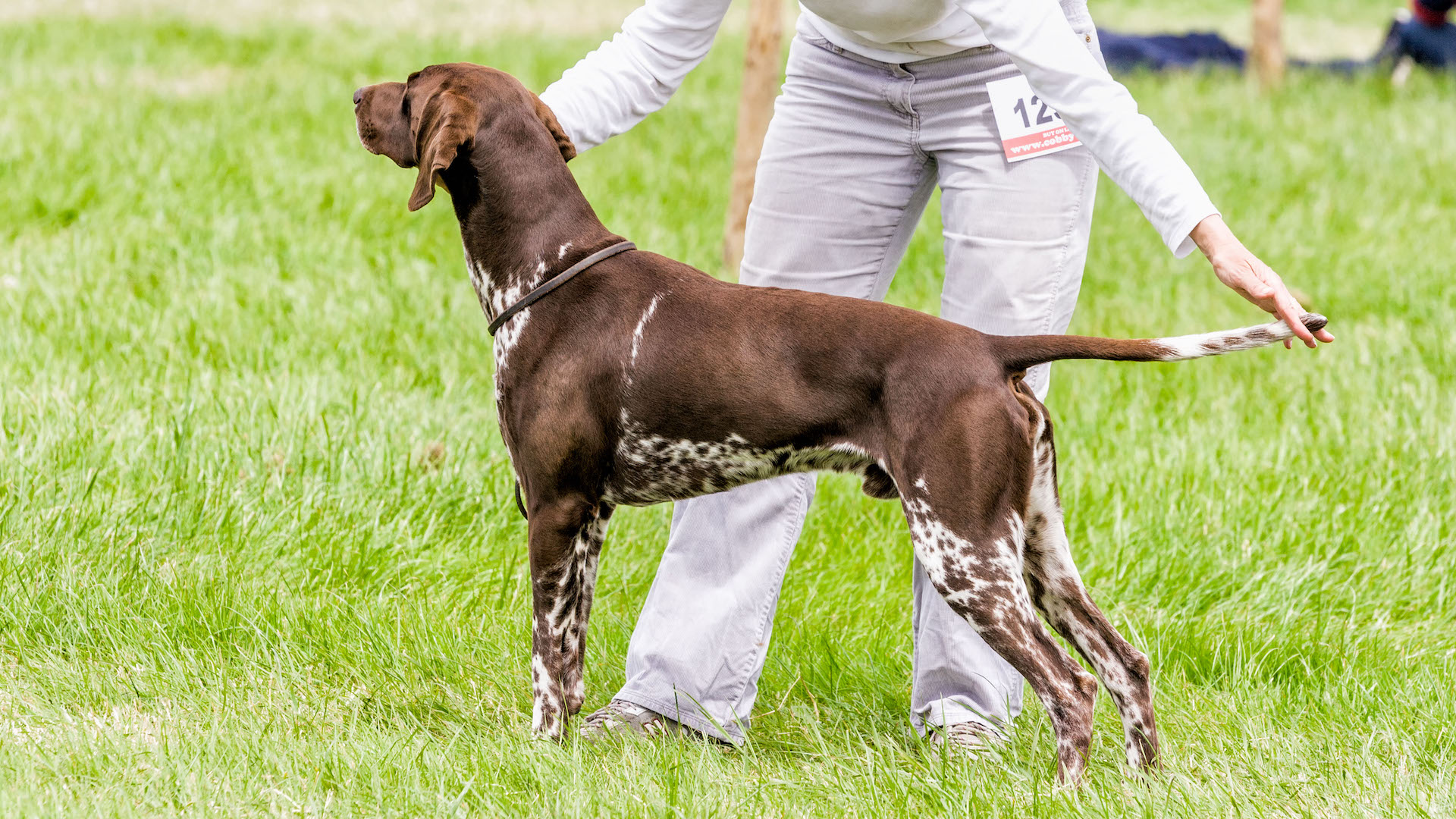
Pointer enthusiasts hold regular shows around the world for this popular group of breeds. Pointers, both German short-haired and English, have also won best-in-show several times at both Westminster and Crufts.
There tends to be very little difference between the working and show lines – this is essentially a working dog and its ideal physique should exemplify this.
20. Scottish Terrier

One of the smallest breeds but a formidable contender at dog shows. At the Westminster Kennel Club Dog Show, this stylish, iconic little terrier is second only to the wire fox terrier, having won best-in-show eight times from 1911 to 2010, and twice at Crufts.
21. Toy poodle

These adorable little pompom dogs are made for the show ring, with their cutie looks and elaborate clip – which dates back to its duck hunting days and is not purely decorative.
Court favorites from the era of Louis XIV and much admired as trick dogs, they know exactly how to please a panel of judges.
22. Pomeranian

These exceptionally fluffy, foxy little dogs are the ultimate in showmanship. Pomeranians will prance, they’re proud and they carry their plumed tail high because they know how to work a crowd.
23. Pekingese
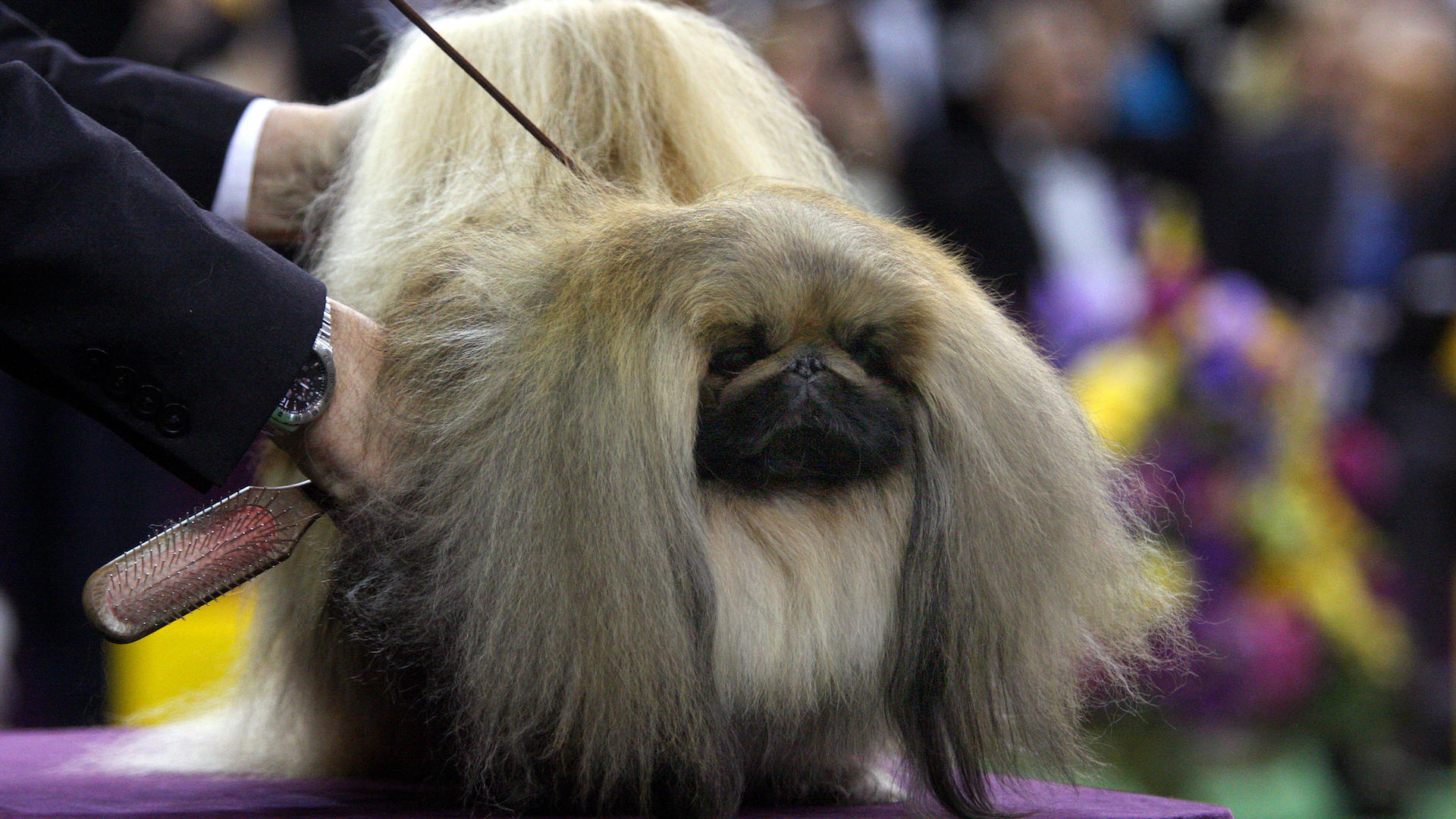
These toy dogs are lap dogs par excellence, but they can also star in the show ring. The best show Pekingese will have a demanding long coat and an abundant mane, which requires copious grooming but will earn him plenty of points from the judges.
24. English Springer Spaniel

There are two strains for the English Springer Spaniel – those that were bred specifically to work in the field, and those that are bred for showing. The working version tends to have a shorter coat and less droopy ears; they’re more wiry and bred for brains and athleticism rather than looks.
Either type can excel as sniffer dogs, but if it’s rosettes you’re after, then look out for the heavier-boned show type.
25. American Cocker Spaniel

The American Cocker Spaniel is an excellent show dog. Closely related to the English Cocker, it is more suited to the show ring or as a sweet family pet than it is to working in the field. The American version was not specifically bred to work, unlike the English, and their appearance is quite different. It is smaller and lighter, with a domed head and short muzzle, and a long silky coat. It has won best-in-show four times at the Westminster Dog Show.
26. Scottish Deerhound

This large sighthound has a rough, slightly scruffy coat, and was bred to course deer in the rugged Highlands of Scotland. Perhaps not the most obvious choice for a show dog, but in fact they excel in the ring. One deerhound, Claire, has twice taken the best-in-show title at the National Dog Show in Philadelphia since 2020, while a deerhound has also taken the laurels at Westminster.
27. Boxer

One thing to know about boxers is that they have proved popular winners at the Westminster Dog Show, landing the top crown four times. They’re also great at other competitions, such as agility, obedience, and flyball, as they love to be active.
28. Doberman pinscher
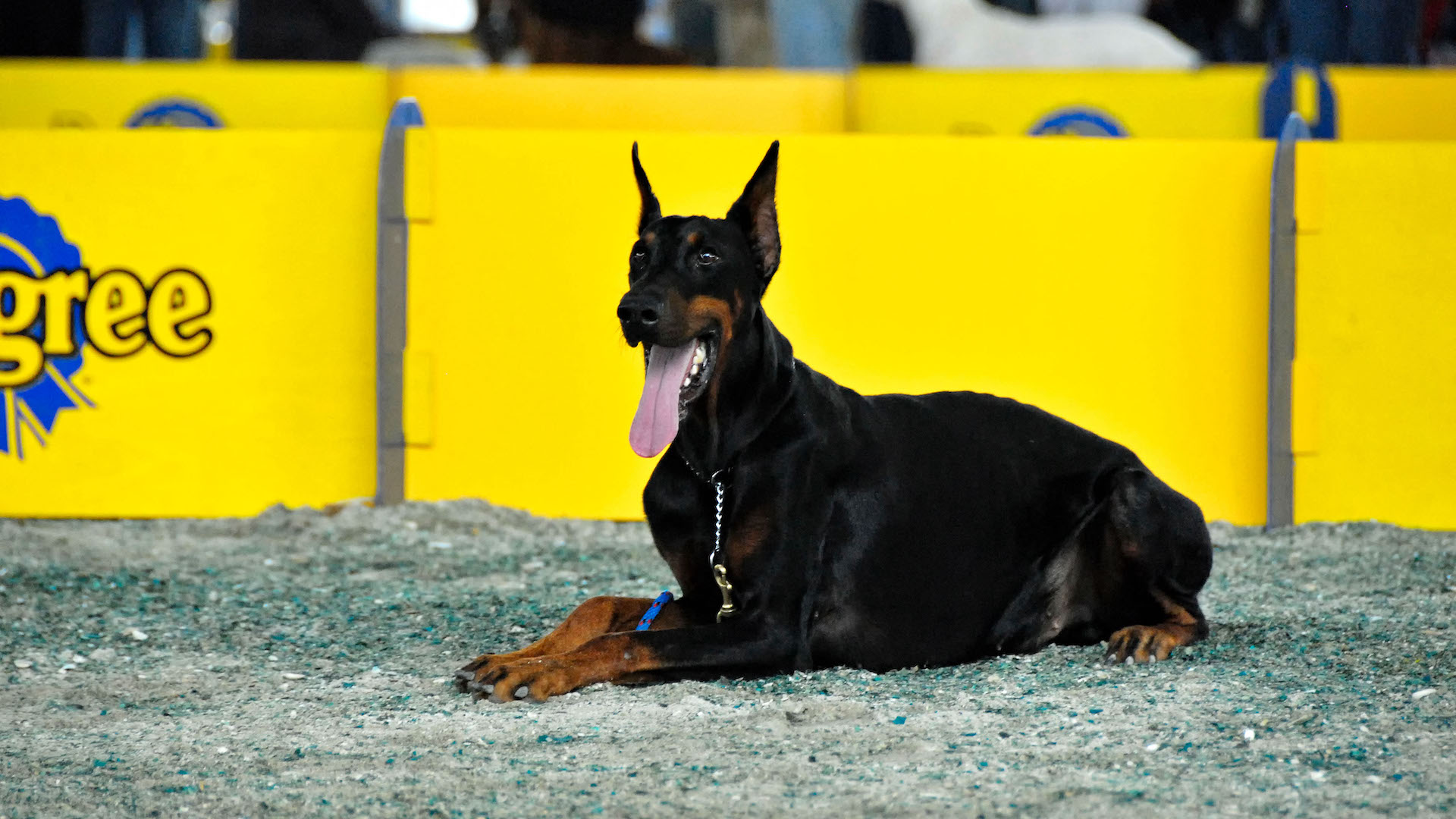
This sleek and noble breed is blessed with a magnificent physique. Not only are they natural protection dogs, but their stature and glistening coat are a winner in the ring. They have taken home the best-in-show award four times at Westminster Dog Show.
29. Smooth fox terrier

Not quite as prolific a winner as the wire fox terrier, the plucky and gregarious smooth version is nonetheless a popular show dog. The very first winner of the Westminster Dog Show was a smooth fox terrier called Warren Remedy, who took the title three years in succession, the only dog to do so. A smooth has also won at the National Dog Show.
30. Sealyham terrier

The Sealyham was a very popular show dog in the 1930s and 40s, and there are both national and breed-specific shows for this predominately white Welsh terrier. They have very short legs, making them a mud magnet, but if you have the time and patience for all the washing and trimming they require, they are a rewarding show dog. The breed is a four-time winner at Westminster Dog show, and a Crufts champion.
31. Bulldog

Don’t be deceived by the sour mug face, the bulldog is an amiable, courageous companion. Their furrowed brows, pushed-in noses, and distinctive rolling gait may be an acquired taste, but they are an easy-going dog for the show ring. They don’t typically get excitable, they love the attention and their smooth glossy coats don’t require hours of detangling and preening. Plus, the breed is a two-time winner at the Westminster Dog Show and a Crufts champion.
32. Yorkshire terrier

The Yorkie’s long, glossy and silky coat is its greatest asset in the show ring. This glamorous toy breed may have developed as a ratter, but has a look of delicate refinement. In the early days of showing, Yorkies used to be shown on a silk cloth or a cushion and still today, they are the only breed that is exhibited on a decorative box in the show ring.







